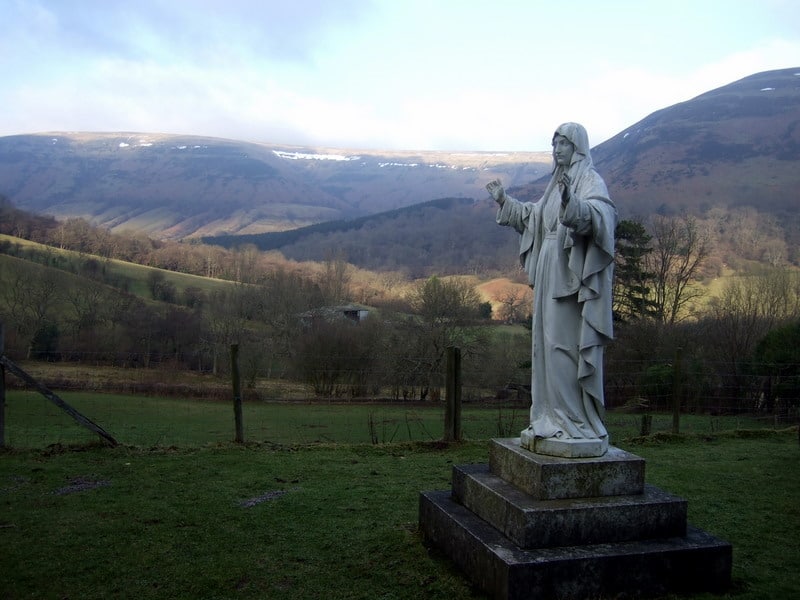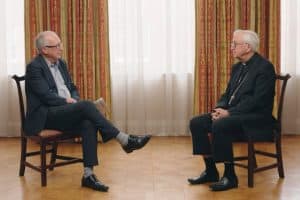By Lianne Kolirin
At the outset of the pandemic, conservationist Hylton Murray-Philipson spent five days in intensive care with his life “hanging by a thread”.
In a round of interviews after his recovery from Covid-19, Murray-Philipson, a friend of Prince Charles, heaped praise on the National Health Service — but also shared his unusual experience in hospital.
In an article for The Spectator in April 2020, he described a series of visions he had while seriously ill. “Of all the images that came to me in intensive care, the strongest of all was that of Jesus calming the storm on the Sea of Galilee,” he wrote. He described his difficulties breathing, which led to him being on a ventilator for several days.
“The appearance of Christ rising from sleep in the bow of the boat to calm the waters was precisely what I needed to calm the storm in my throat and in my mind. Jesus didn’t address me, but I felt His peace radiating out from the boat towards me. My storm abated.”
Others experienced similar episodes while suffering from Covid-19, as Bettina Schmidt, a professor in the study of religions and anthropology of religion at the University of Wales, told the Religion Media Centre.
Professor Schmidt, director of the Alister Hardy Religious Experience Research Centre at the university, hopes to hear from others with experiences similar to Murray-Philipson for a research project in collaboration with the Center for Mind and Culture in Boston in the United States.
Professor Schmidt is collecting accounts of experiences people had during the pandemic. Participants will share anonymously, describing how ill they were, what treatment they received and how the vision has impacted their life.
“People with visions often see a deceased relative or a religious figure,” she said. “This is also something I’ve found in the research, that people say that they have been more or less struggling for survival with Covid and suddenly have the vision or see Jesus and they feel safe.”
But reactions differ, she added. “Some people get relief and assurance that they will get through it because God is on their side and some people get scared and feel their end is now coming. Neuroscience would say it’s something in the brain but I think this is for the people who experience it to decide and not for me,” she said.
Visions are central to Christianity: the belief that God can reveal Himself directly to Man. Both testaments of the Bible have examples of how God communicates through visions and dreams while some argue that the resurrection was a visionary experience.
Examples of such visions also abound in other religions. The Old Testament features the tale of Jacob’s Ladder, stretching from Heaven to Earth, as well as that of the burning bush that God uses to speak to Moses. The Quran emphasises the value of dreams and visions as revelations that prove that Allah is omnipotent.
“The notion of visions, when you limit it to religion, is relatively common in Christianity and goes back to the New Testament and the Resurrection,” Professor Schmidt said.
“There have been different mystics who had visions either from Jesus or Mary to convey a message from God or the Holy Spirit. Of course, there are other ways [of communicating with God]. Vision is seen as stronger than hearing a voice. It is seen as evidence that God or Jesus exists. But there are also visions in other religions – in Islam and in Hinduism and other religions – as a way of receiving a message from the divine.”
When Murray-Philipson was interviewed on the BBC Radio 4’s Today Programme, some felt presenter Nick Robinson brushed off his account, suggesting medication had played “tricks with the mind”.
While some visionaries have been accepted and even elevated to sainthood, others have been dismissed. Among them was Joseph Smith, founder of the Church of the Latter-day Saints, who set up the church after detailed descriptions of the visions he experienced were dismissed as delusions.
Medieval Christian mystic Margery Kempe was repeatedly threatened with being burnt at the stake, according to Dr Laura Kalas, a senior lecturer in medieval literature at Swansea University and author of Margery Kempe`s Spiritual Medicine.
Julian of Norwich, a medieval anchoress, or religious hermit, was a contemporary of Kempe and fellow visionary, according to Dr Kalas.
Julian lived in permanent seclusion in a cell attached to St Julian’s Church, Norwich. In Revelations of Divine Love, she described her first visions after falling seriously ill at 30. As the last rites were administered, Julian gazed intently at the crucifix before experiencing numerous visions of Jesus.
In describing what might constitute a vision, Dr Kalas said: “Rapture is a good way of thinking about it. Visions are usually characterised by an intense contemplation or meditation; a feeling of being seized or taken away into a different kind of state of consciousness or cognition. Different visionaries describe that experience differently.”
The Book of Margery Kempe is considered the first autobiography of a woman in the English language. Born in 14th-century Norfolk, Kempe described her visions in detail using a scribe.
“She inserted herself into biblical scenes,” Dr Kalas said. “At one point she feels herself literally immersed at the foot of the cross with Mary watching Jesus dying. She describes in minute detail the wounds of Christ and his body beginning to fail. She also described her very intense reaction as one of extreme pain and compassion or she collapses in those visions to the ground.”
Margery Kempe, according to Dr Kalas, was accused by many of being “mad or ill” and was subjected to doctrinal interrogations by senior religious figures.
Nowadays people who claim to have had a vision often find themselves referred for psychiatric examination. Other conditions, including dementia and Parkinson’s, have also been known to cause hallucinations, which muddies the waters still further for believers today.
“It’s always a bit of a challenge for people in the 21st century to believe someone has had a vision,” Professor Schmidt said. “In medieval times people were much more trusting. It’s a fine balance between religious faith and mental illness.”

















